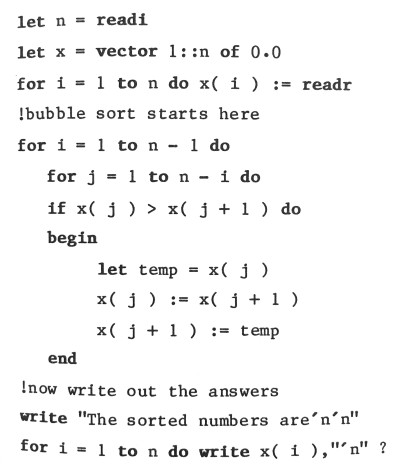When Algol 60 first appeared, it heralded a new era for programming languages, one which encompassed the idea of “blocks” of code, amongst other things. So why did such a promising language fail? There are likely a number of reasons.
Firstly, Algol 60 had no I/O in the specification. This meant that when Algol was implemented on a particular machine I/O was added, and so the specifications for I/O differed among implementations. Secondly, the 1960s were awash with new programming languages – everyone wanted theirs to be the next “big thing”. It is harder to compete in this sort of an environment. There was also very little time between the release of Algol 60 and beginning work on its successor Algol 68. Algol may have been more successful if effort had been spent on improving Algol 60, rather than creating a whole new language.
Thirdly, and likely the biggest issue was IBM. Algol 60 made some headway in Europe, but never really established itself in North America. Why? IBM’s US domestic installed market share for computer systems was around 71.4% in the 1960s. Its main competitors, Honeywell and Univac held 8.1% and 9.6% of the market respectively [1]. Algol60 was suppose to take over some of Fortran’s territory, but due to IBM’s dominance, this never happened. In fact Fortran so dominated the industry, that even IBM’s other language PL/I (1964) failed to make any headway. On the business side, IBM adopted Cobol in 1962 as its primary development language.
By the time the tide started to turn against Fortran (in the late 1960s), effected by the surge of interest in structured programming, Algol60 had been usurped by Algol68. Algol68 was too complex a language, and other players in the guise of Pascal (and later C) would take over. Pascal was block-oriented, and structured, and would lead the way for programming in the 1970s. By the time S-algol appeared in the late 1970s, it was over for Algol. Which is a pity, because S-algol showed real promise. Here’s a bubblesort in S-algol.
[1] Arnst, C., “Charts show IBM outran others in ’60s”, Computerworld, Nov.7, p.57 (1977)

I wonder if this would do better today. It looks quite modern; its also funny to think that languages like go are fairly similar, with no semicolons, use of structures to define type. Even the syntactic sugar of defining and populating lists in one line seems forward thinking. The C based languages are starting to gain more convenience features now but C itself almost seems like a step backward from this.